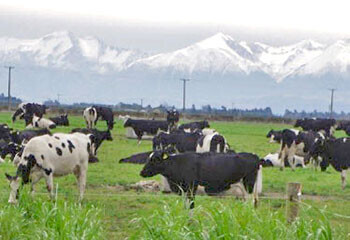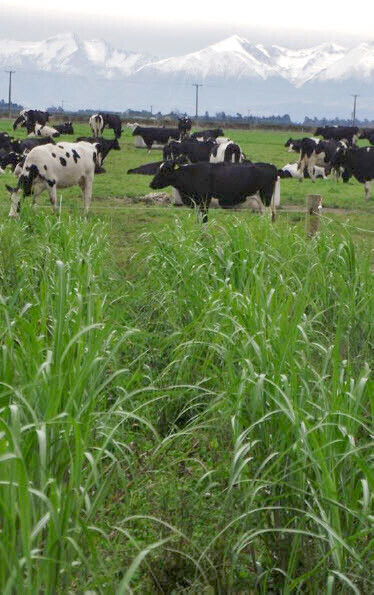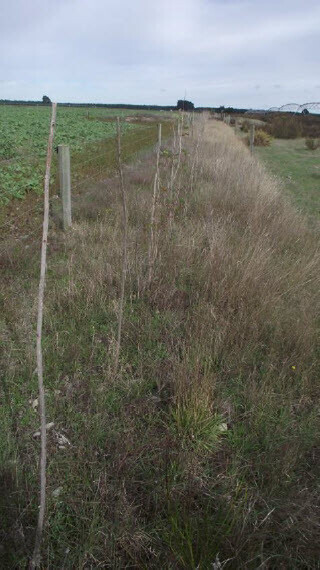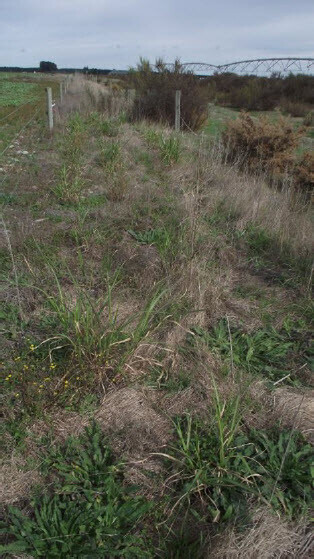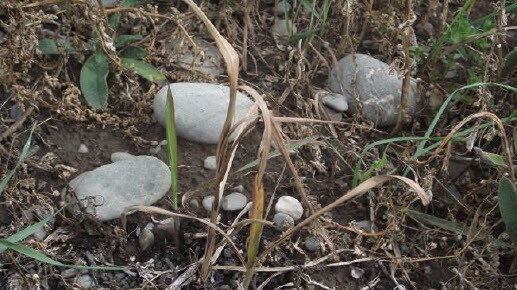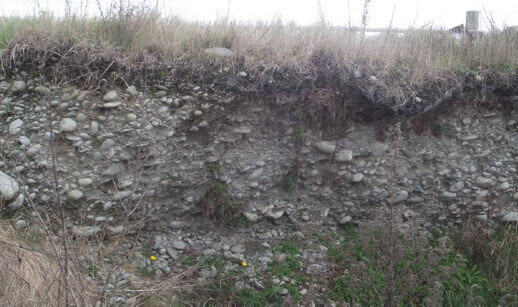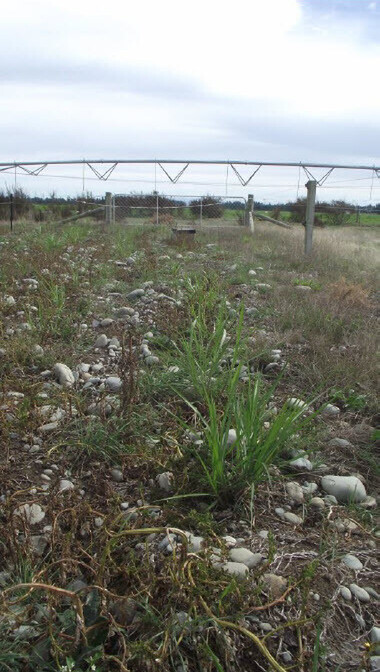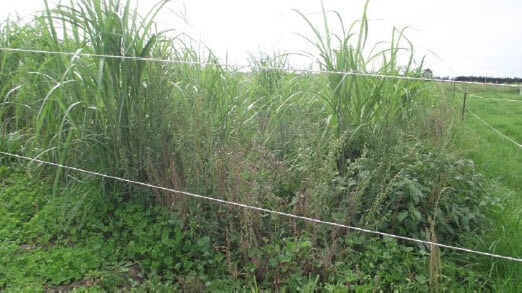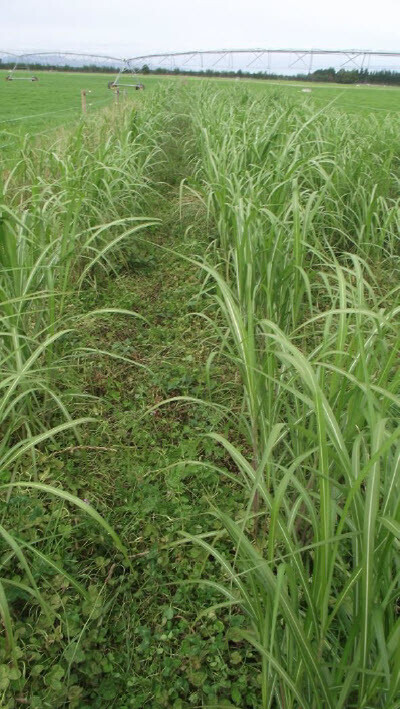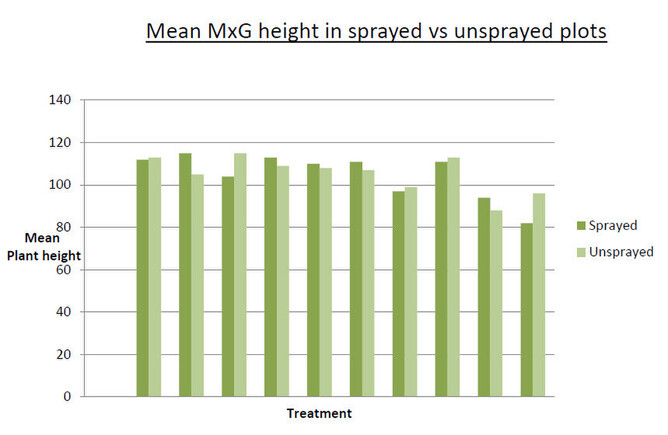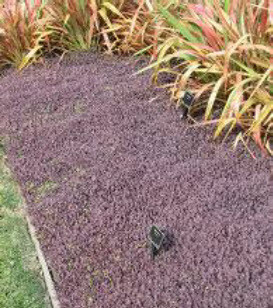Evaluation and Enhancement of Ecosystem Services on Dairy Farms
Project Update. Period: To April 9, 2013
Arrival of Autumn
Fig.1: MxG plantings at Aylesbury Farm
Growth of irrigated plants has continued to be impressive at Aylesbury farm with some now over 1.5 m tall. Karetu farm received its first significant rainfall since February 6 on March 19 with 26 – 30 mm of rain over two days. This resulted in what were apparently dead MxG plants sprouting new shoots, indicating the robustness of this plant. Recent rainfall in early April brought about further new vigorous growth as illustrated by fig.3. In comparison the Poplar trees next to the MxG plantings, Fig.2, shed their leaves long ago and may not have survived.
The amount of new growth of the MxG plants at Karetu varies greatly as illustrated by figs. 4 and 5. Plants planted on November 27, 2013 have a higher number of plants exhibiting rapid re-growth compared to those planted on December 6, 2013. This indicates that planting earlier in the year would result in the majority of plants being able to survive summer drought conditions. What is surprising is that, even with planting so late, many plants have survived the drought especially considering the poor soil conditions found here. Fig. 6 shows the soil profile at the location of the MxG shelterbelt.This is typical of the Lismore soils found in this area which are characterised by very shallow deposits of silty loess covering a very stony substrate.
Fig. 2: Poplar trees next to the MxG plantings at Karetu farm.
Fig. 3: New growth from MxG plantings at Karetu farm.
Fig.4: MXG plants at Karetu showing early signs of new growth.
Fig. 6: Soil profile below MxG planting area at Karetu farm.
Fig.5: MxG plants at Karetu showing recent rapid growth.
Weed control in MxG Shelterbelts
At Aylesbury farm, where MxG plantings have been constantly irrigated since 23 December, weed and MxG growth have continued to be vigorous. To investigate whether, in these conditions, weed competition limits MxG growth a small trial was set up. Eight similar sized areas in each of three of the MxG plantings were marked out. Four of these areas were sprayed, (Fig 7), with Turfix, a broadleaf herbicide not toxic to MxG plants, and four were left unsprayed, (Fig 6). After four weeks, over which time the MxG grew 1 cm a day, the height of twelve plants in each treatment plot were measured. This resulted in half of all the plants in each of the MxG shelterbelts being measured. The mean height differences between sprayed and unsprayed plots is illustrated in Fig. 8. The mean height of plants in the unsprayed plots was 104.9 cm and that of the sprayed plots was 105.3 cm. This indicates that well established MxG plants on irrigated dairy farms are vigorously competitive. It does not mean that weed control is unnecessary; in fact all plantings needed spraying in the early stages, especially to prevent smothering by fathen (Chenopodium album). However it does indicate that once a certain height is reached, and in the absence of other stresses such as drought, the deeper rooting MxG plant is less prone to the effects of weed competition.
Fig.6 : Unsprayed area of MxG shelterbelt in paddock 21 at Aylesbury farm.
Fig.7: Sprayed area of MxG shelterbelt in paddock 21 at Aylesbury farm.
Fig. 8; Bar chart showing mean MxG plant height in sprayed and unsprayed plots 30 days after spraying.
Future implications of spray trial
In dense stands of MxG the rapid plant growth soon shades out any plants growing between the stands. In the case of shelterbelts which are narow linear plantings, there may be enough light penetration to allow the growth of desirable ground-covering plants.
One of these is Acaena inermis purpurea, (Fig 9), an endemic New Zealand plant species. It has been used successfully in vineyards where it spreads well, does not compete with the crop and delivers a wide range of ecosystem services including weed suppression as well as pollen and nectar for bees, pest predators and butterflies While the benefit for pest control on dairy farms is unclear its other attributes make trial plantings of A. inermis in future MxG stands a worthwhile addition to this research on the ecosystem services benefits of planting MxG shelterbelts on dairy farms.
Fig.9: Acaena inermis purpurea
Media opportunities
The lincoln-based team consider that a media release covering the key points of the work to date may be appropiate and we are contacting Steve Attwood at Westland Milk Products to explore this idea. Of course we will not pursue any media links without the invlovement and full approval from the company.
